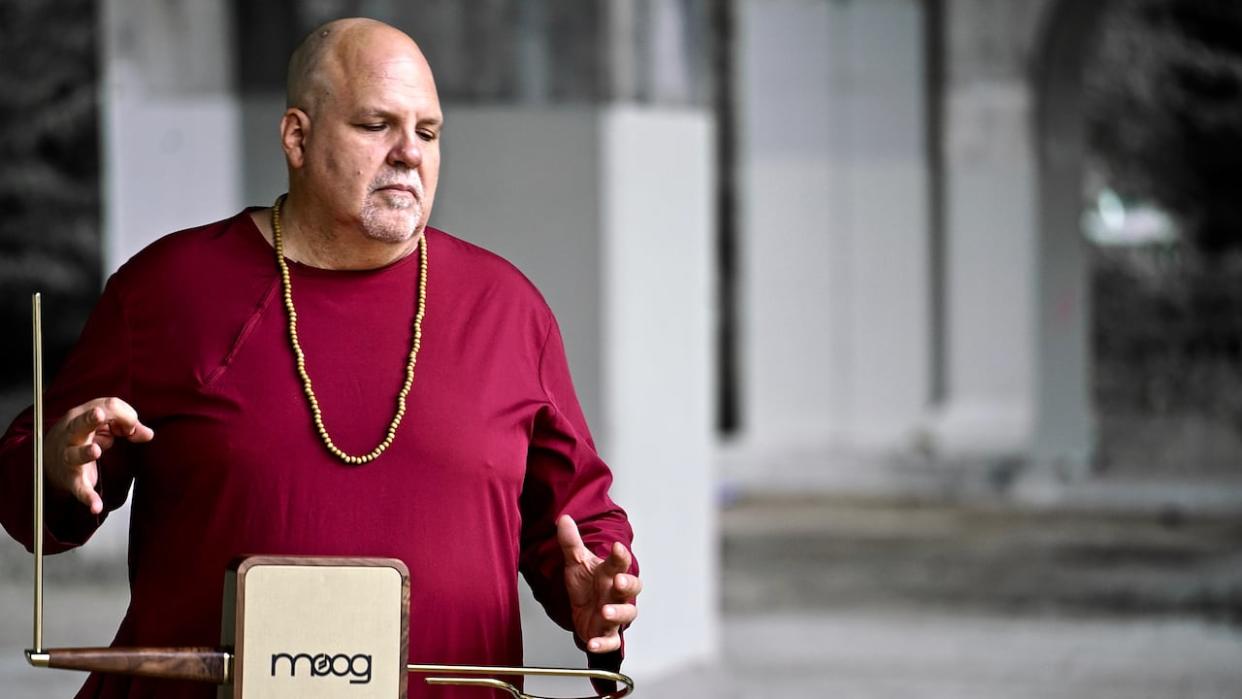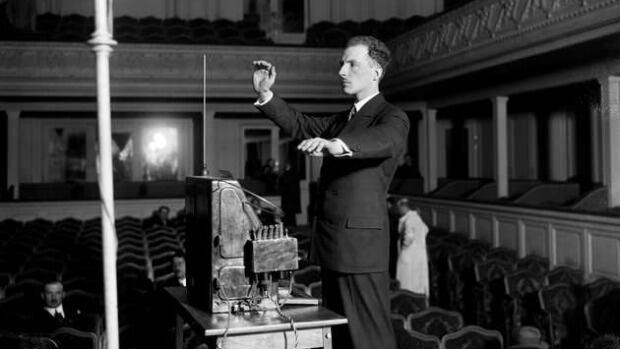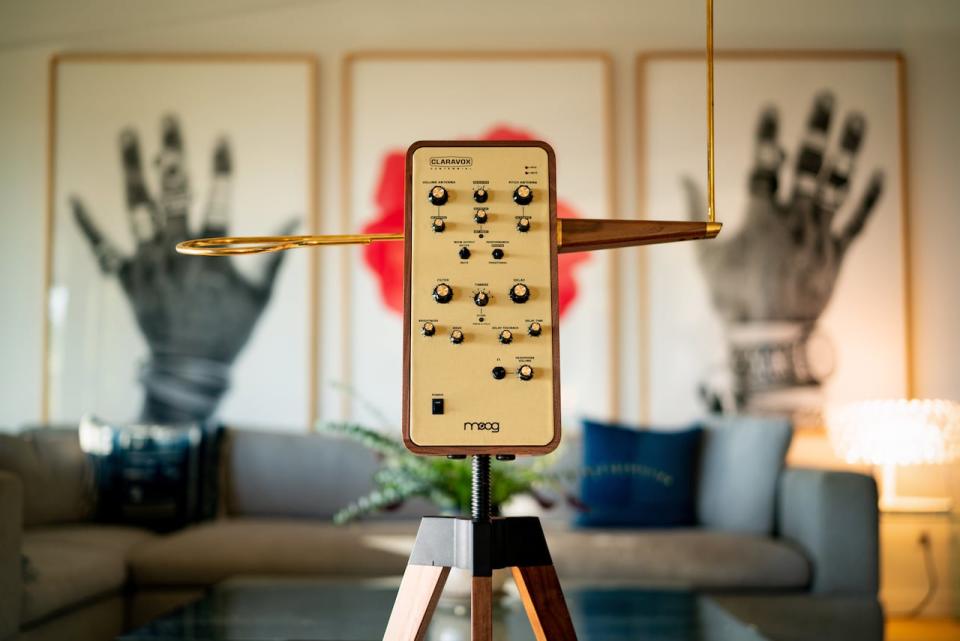With a wave of his hand, a Vancouver punk rock legend becomes Theremin Man

Stephen Hamm remembers watching The Song Remains the Same, a concert film featuring British rock band Led Zeppelin, as a teenager at Vancouver's Ridge Theatre in 1979, and being captivated by guitarist Jimmy Page.
In the film, Page wields his famed double-neck guitar on stage at New York's Madison Square Garden and plays a Gibson Les Paul guitar with a bow. But what stuck with Hamm the most was Page's use of the theremin — an electronic instrument that's controlled without any physical contact by the performer — "to make the crowd go a little bit crazy in their stoned state."
"It was pretty great," Hamm told CBC's North by Northwest.
Hamm went on to become a key character in Vancouver's music scene. He was a founding member of the seminal punk band Slow, played bass for the Evaporators fronted by Nardwuar the Human Serviette, and performed in his own duo, Canned Hamm.
His latest musical incarnation is Theremin Man, which sees Hamm playing the enigmatic instrument while wearing shimmering robes. His new album, Songs for the Future, is set to be released on Tuesday.
Theremin Man's origin story dates back to a conversation Hamm had with his "guru," who he claims lives on "one of the highest peaks on Bowen Island." He suggested Hamm branch out on his own after working on projects with others.
Hamm's home studio, which he calls his "celestial grotto," is filled with musical instruments, but it was the one created more than 100 years ago by Russian scientist Lev Theremin that called out to him, he said.

Russian creator Lev Theremin demonstrates his invention. (Crobis Bettmann)
"The theremin really popped to the forefront and people were attracted to it because it's a really unique instrument," he said.
The theremin is controlled by moving one's hands in the air near two metal antennas, thereby altering their magnetic fields. One antenna determines pitch, the other volume.
"It was the sound of pure electric current," Sean Michaels, author of Us Conductors, a novel about the life of the theremin's inventor, told CBC News in 2020 on the theremin's 100th anniversary.
Hamm describes waving your right hand to control the theremin's pitch and left hand for volume as akin to "patting your head and rubbing your tummy."

Hamm owns a Claravox Centennial, like one pictured here. Moog Music designed the instrument to celebrate the 100th anniversary of the theremin. (Supplied by Moog Music)
Duets with Rosie
Emulating a disembodied voice, the theremin has been featured in films, including the 1951 science fiction classic The Day the Earth Stood Still.
Hamm says the theremin fits in perfectly with his interest in retro-futurism, which explores how the future was envisioned in the past.
"I love the esthetic of how the future looked from the 1960s or the 1940s or the 1950s," he said. "This thing [the theremin] is like the future in 1920. This was the future. It was a sensation."
Among his favourite theremins in his celestial grotto is the Claravox, which was designed by Moog Music to mark the 100th anniversary of its creation. The instrument is named after Clara Rockmore, the theremin's first virtuoso.
Hamm named his Claravox "Rosie" because it resembles Rosie the Robot from the retro-future cartoon series The Jetsons.
On Songs for the Future, Hamm sings and plays the theremin, which he says has a unique, ethereal sound. The album, he says, highlights a relationship between musician and instrument that is anything but typical.
"It's like a voice, so it's almost like having a second singer," Hamm said. "So it's almost like I'm duetting with the theremin ... Rosie is my accompanist. Or I'm her accompanist. I'm not too sure how that goes."


